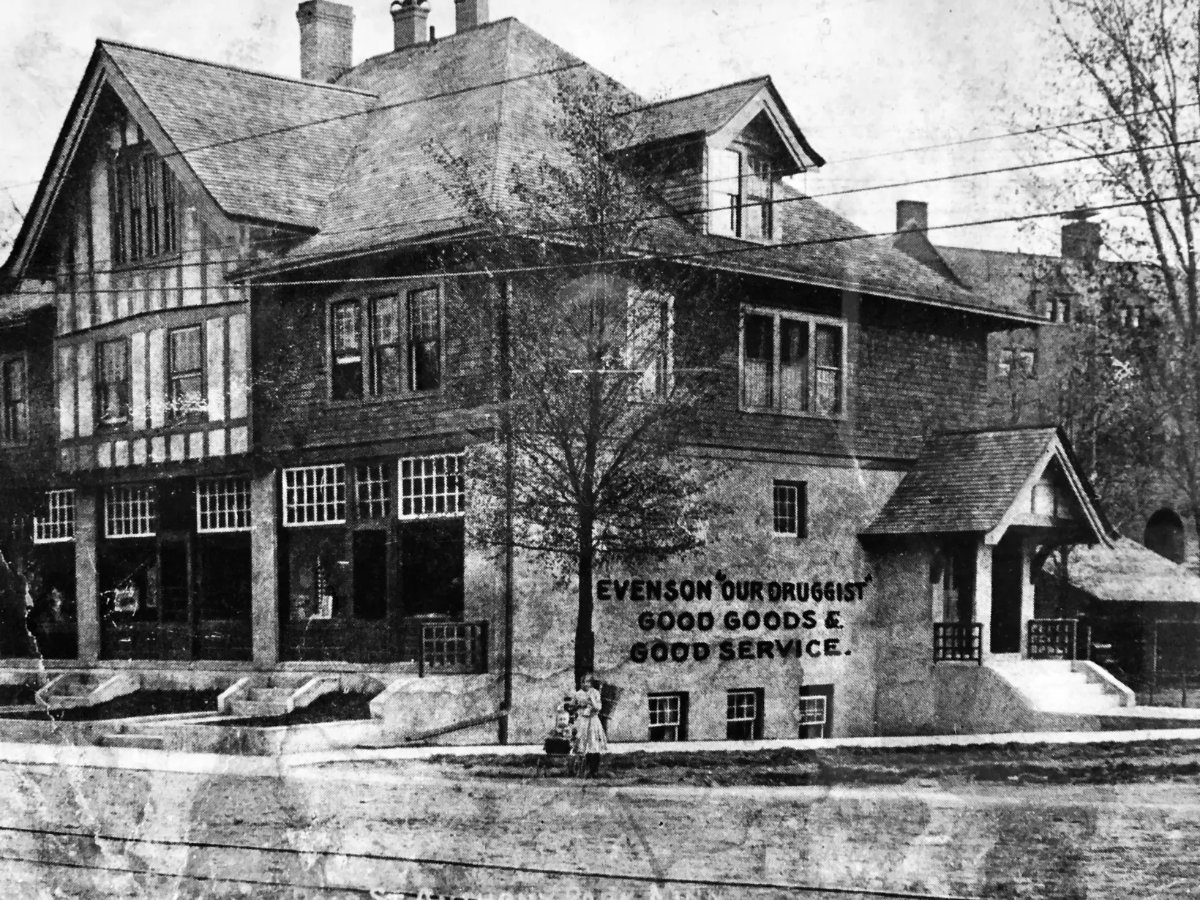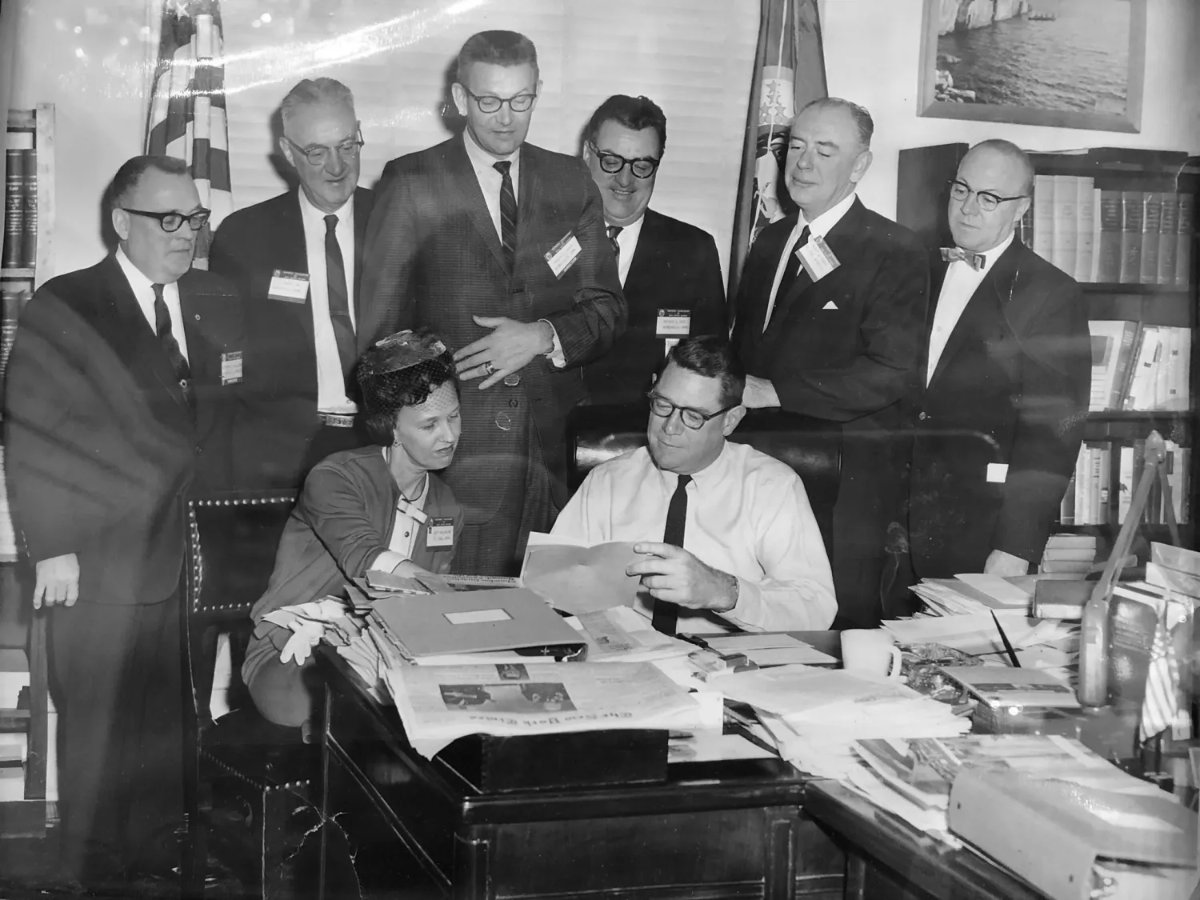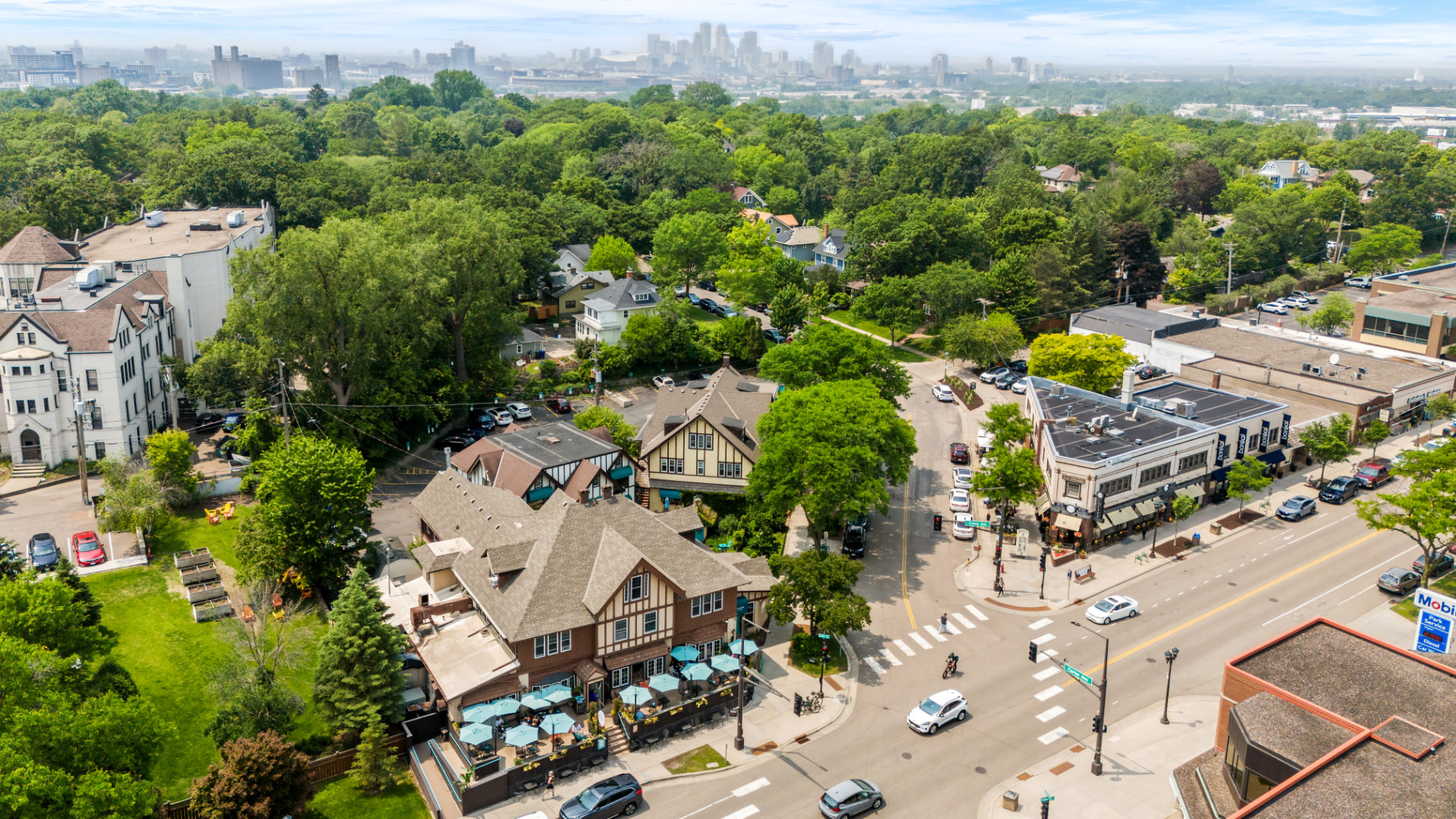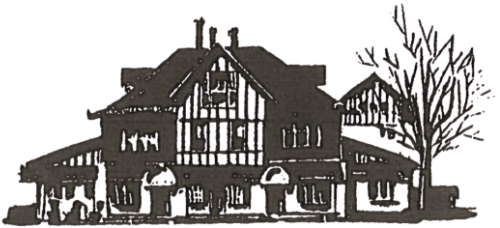A Cherished Piece of Saint Anthony Park
Milton Square stands as a historic mixed-use complex at the intersection of Como and Carter Avenues in St. Anthony Park, St. Paul.
Built between 1909 and 1912, this architectural landmark has served as a vital community hub for over a century, combining residential apartments, retail spaces, and community gathering halls in an innovative design that reflected early 20th-century urban planning ideals.

The Garden Suburb Movement
Milton Square emerged during St. Anthony Park's development as a "garden suburb" - a planned community designed to combine the benefits of urban and rural living.
This concept, popularized by landscape architect Horace Cleveland in the 1870s, featured:
- Curved streets following natural topography
- Abundant green spaces and parks
- Mixed residential and commercial development
- Access to public transportation (streetcars)
The neighborhood was deliberately planned as a retreat from the crowded, polluted conditions of downtown St. Paul and Minneapolis, while maintaining convenient access to both cities via rail and streetcar lines.
The Builders and Visionaries
The Midway Investment Company
The complex was built by the Midway Investment Company, formed in 1908 with key figures including:
- George Eddy: President and driving force
- W.W. Clark: Vice president, prominent local attorney and real estate developer
- Franklin Ellerby: Architect who designed the complex
Franklin Ellerby: From Inspector to Architect
Franklin Ellerby, a St. Anthony Park resident since the 1890s, transitioned from city building inspector to architect at age 39. He designed Milton Square from his home office on Bourne Avenue, with help from his teenage son Thomas. This project launched what would become an internationally significant architectural career, including:
- Ramsey County Courthouse and St. Paul City Hall (Art Deco masterpiece)
- Multiple buildings for the Mayo Clinic
- The firm Ellerby & Company, later Ellerby-Becket, which became renowned for medical facilities and sports stadiums worldwide
Building Sequence & Design
The complex was constructed in phases:
1909: Original Como Avenue building (2½ stories with retail below, apartments above)
1912: Carter Avenue building with similar mixed-use design
1914: Middle apartment building and various additions
1914-1925: Additional retail extensions and dormer additions
Architectural Features
- Half-timbered Tudor Revival style matching neighborhood aesthetics
- Central courtyard with fountain (originally a fish pond)
- Two community halls with large stone fireplaces: "Ye Fireside Hall" (1909) & "Tamarack Lodge" (1914)
- Interconnected heating system serving all buildings
Community Life and Commerce
Retail Evolution
The ground floor hosted essential neighborhood services:
- Grocery stores: Multiple proprietors including Hoby's, Parker Provisions, Wallace & Frankie, National Tea, Piggly Wiggly, and Harder's Food Market
- Bakeries: Including the Grove family bakery (1930s-1950s)
- Various shops: Frame shops, bookstores, post office branch
The Halls as Social Centers
The Fireside Hall and Tamarack Lodge served numerous community functions:
- University fraternity and sorority events
- Wedding receptions and parties
- Community fundraisers (including WWI soldier homecoming events)
- Religious services (Corpus Christi Catholic parish met here 1939-1941)
- Social club meetings
Residential Life
The upper floors provided apartments for both shop owners and other residents. Notable features included:
- Mix of efficiency and larger units
- Many shopkeepers lived above their businesses
- Families raised children in the complex
- Strong sense of community among residents
Ownership History
1909–1915: Midway Investment Company (builders)
1915–1917: George Niles (renamed it "Niles Court")
1917–1957: August J. Franke (longtime owner, grocer)
1957–2025: Milton family (John and Mary Ann Milton, after whom the complex is named, and later their children, with their daughter Heather O'Malley managing the complex)
2025–Present: Local investors Ned Rupp, Spencer McMillan, and Mark Battles take over management of the complex.

Mary Ann Milton, one of the first female realtors in St. Paul, purchased the complex in 1957. Milton promoted the site’s European design, attracting fashionable boutiques and cafes as tenants.
Milton and the complex were frequent topics in Oliver Towne’s popular columns in the St. Paul Dispatch newspaper. Towne is believed to be the source of the name “Milton Square.”
Significance and Legacy
Architectural Innovation: An early example of mixed-use development predating modern shopping centers.
Community Planning: Embodiment of garden suburb ideals with integrated living, shopping, and social spaces.
Neighborhood Identity: A landmark that helps define St. Anthony Park's character.
Continuous Use: Over 110 years of continuous operation as a mixed-use facility.
The complex stands as a testament to early 20th-century community planning, where developers, architects, and residents worked together to create livable, walkable neighborhoods with strong social connections. Its enduring success demonstrates the timeless value of thoughtfully designed mixed-use architecture that serves both practical needs and community life.
Present Day
Today, Milton Square continues to house residential units and commercial spaces, including restaurants, shops, and offices. The building maintains much of its historic character while adapting to contemporary needs, serving as both a functional space and a cherished piece of St. Anthony Park's architectural heritage.


